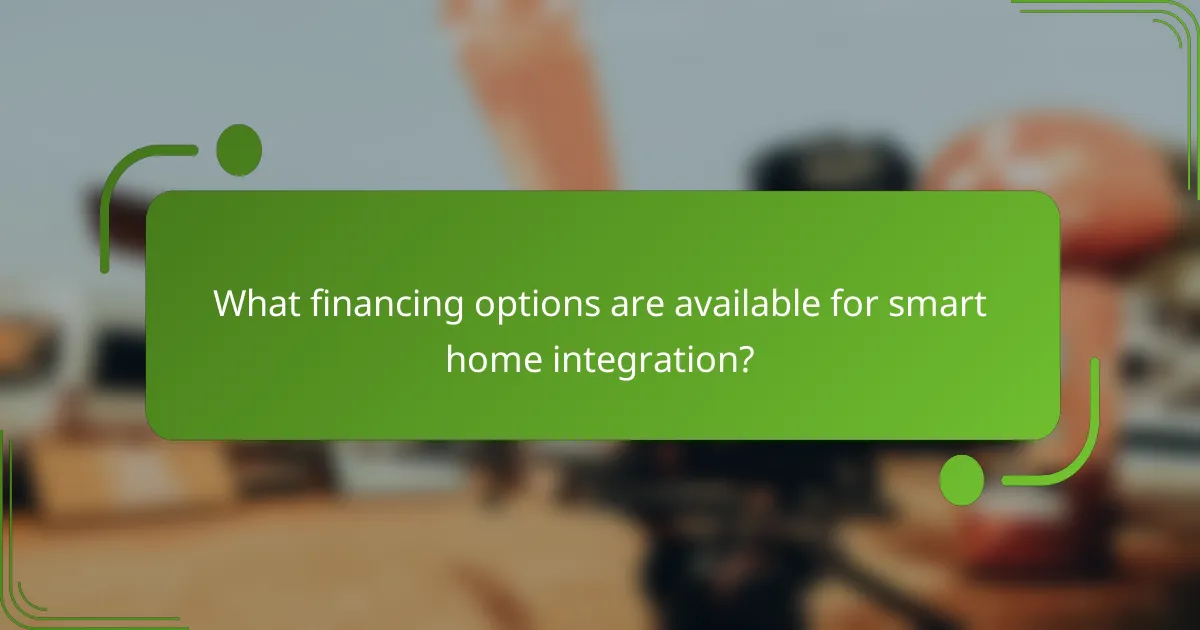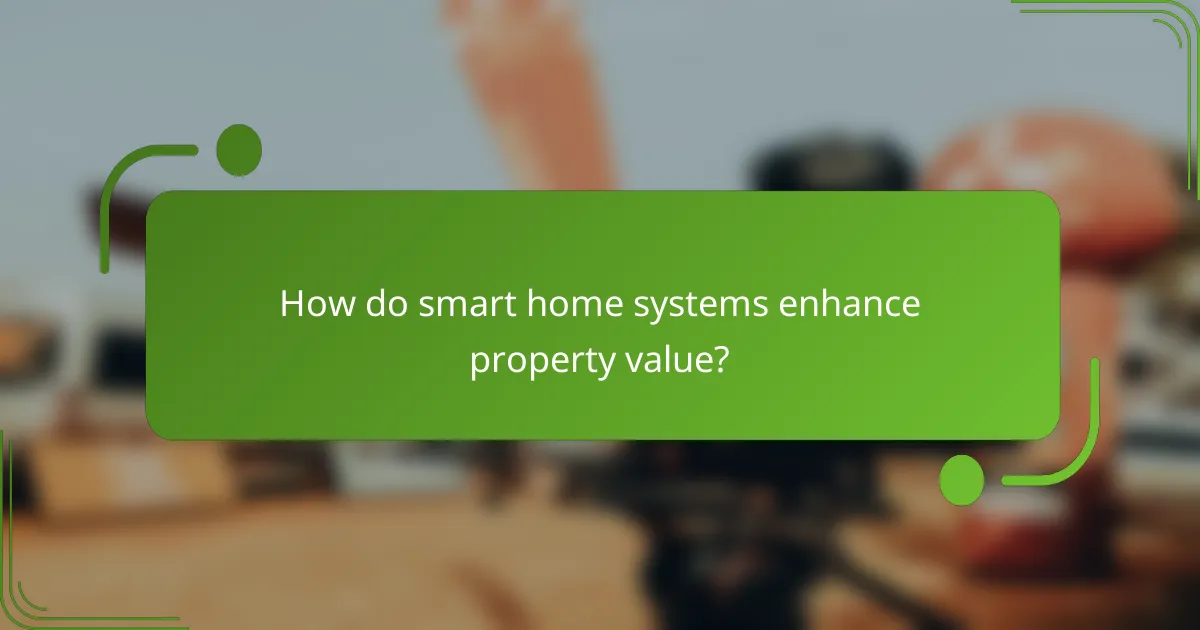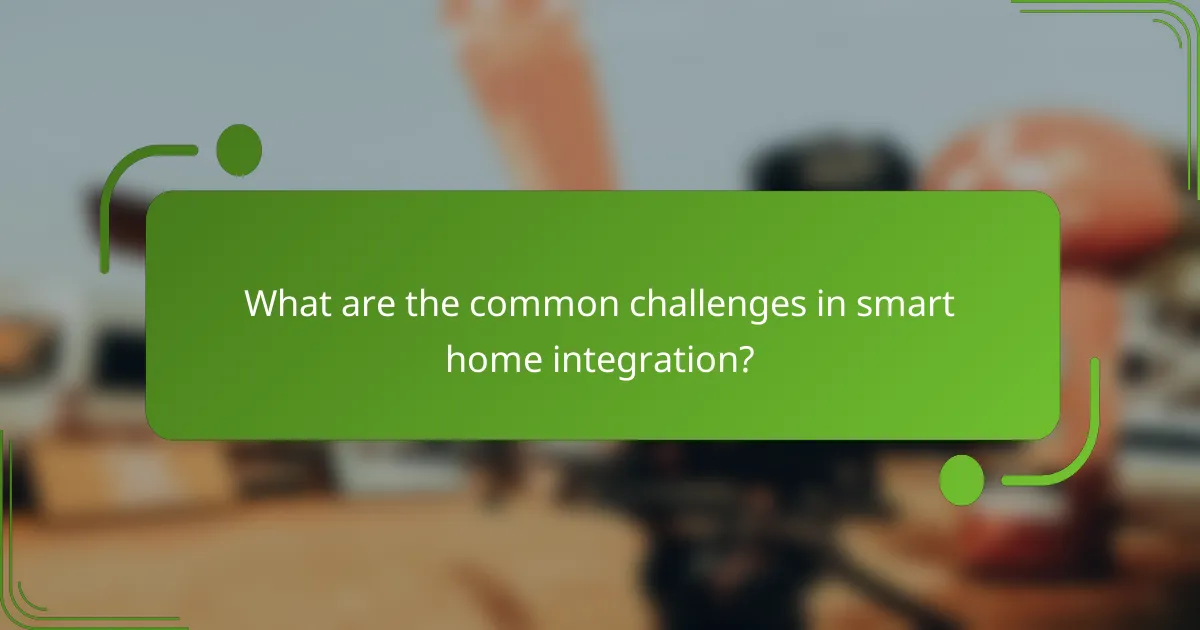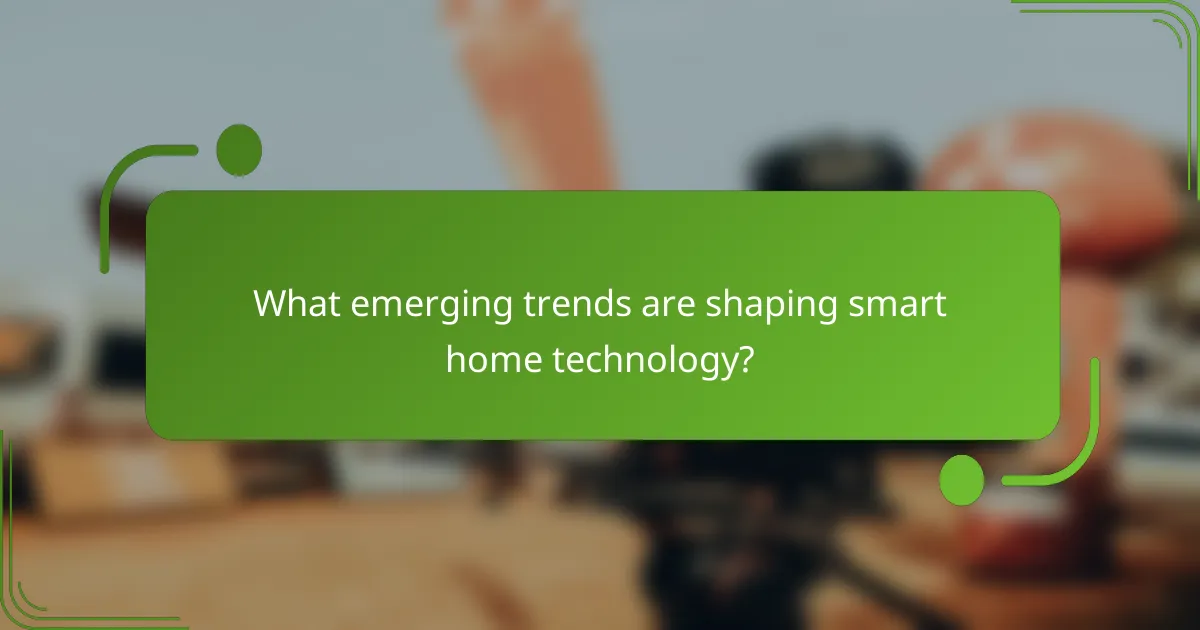Integrating smart home technology can enhance your living experience, but understanding the estimated costs is crucial for effective budgeting. Homeowners in the UK may spend anywhere from a few hundred to several thousand pounds, depending on the complexity of their chosen systems. By planning carefully and exploring various financing options, you can make informed decisions that align with your financial situation while upgrading your home.

What are the estimated costs of smart home integration in the UK?
The estimated costs of smart home integration in the UK can vary significantly based on the complexity of the system and the devices chosen. Generally, homeowners can expect to spend anywhere from a few hundred to several thousand pounds to fully integrate smart technology into their homes.
Average installation costs
Installation costs for smart home systems typically range from £200 to £1,500, depending on the number of devices and the complexity of the setup. Basic installations, such as smart lighting or smart thermostats, are on the lower end, while comprehensive systems that include security cameras, smart locks, and home automation hubs can be more expensive.
It’s advisable to obtain multiple quotes from certified installers to ensure competitive pricing. Some retailers also offer installation services, which may be bundled with device purchases, potentially saving on overall costs.
Cost breakdown by device type
Different smart home devices come with varying price tags. For instance, smart bulbs can cost around £10 to £30 each, while smart thermostats typically range from £100 to £250. Security cameras may start at about £50 for basic models and go up to £300 or more for advanced options with features like night vision and cloud storage.
When budgeting, consider the total number of devices you plan to install and their individual costs. Creating a list of desired devices can help in estimating the overall investment needed for smart home integration.
Long-term savings on utilities
Investing in smart home technology can lead to significant long-term savings on utility bills. For example, smart thermostats can reduce heating costs by up to 20% by optimizing energy use based on your schedule and preferences. Similarly, smart lighting systems can lower electricity costs by allowing you to control lights remotely and set schedules.
While the initial investment may seem high, the potential savings on energy bills can offset these costs over time. Homeowners should track their utility expenses post-installation to evaluate the financial benefits of their smart home systems.

What budgeting tips can help with smart home projects?
Effective budgeting for smart home projects involves careful planning and prioritization. By setting a realistic budget, focusing on essential devices, and taking advantage of promotions, you can manage costs while enhancing your home’s technology.
Setting a realistic budget
Begin by assessing your overall financial situation and determining how much you can comfortably allocate to smart home upgrades. A typical budget might range from a few hundred to several thousand dollars, depending on the extent of the integration.
Consider creating a detailed list of desired devices and their estimated costs. This will help you visualize your spending and adjust your budget accordingly. Remember to factor in installation costs, which can vary significantly based on complexity.
Prioritizing essential devices
Identify which smart home devices will provide the most value for your lifestyle. Focus on essentials like smart thermostats, security cameras, or lighting systems that enhance convenience and safety.
By prioritizing these key devices, you can avoid overspending on less impactful gadgets. Start with a few core items and expand your system gradually as your budget allows.
Utilizing cost-saving promotions
Keep an eye out for seasonal sales, discounts, and bundle deals from retailers. Many companies offer promotions during holidays or special events, which can significantly reduce costs.
Additionally, consider signing up for newsletters or loyalty programs from smart home brands. These often provide exclusive offers and early access to sales, helping you save money on your purchases.

What financing options are available for smart home integration?
Several financing options can help you afford smart home integration, including personal loans, credit card financing, and manufacturer financing programs. Each option has its own advantages and considerations, making it essential to evaluate which best fits your financial situation and project scope.
Personal loans for home upgrades
Personal loans are a popular choice for financing smart home upgrades, offering fixed interest rates and predictable monthly payments. Typically, these loans range from a few thousand to tens of thousands of dollars, depending on your creditworthiness and lender policies.
When considering a personal loan, shop around for the best rates and terms. Look for lenders that offer no prepayment penalties, allowing you to pay off the loan early without incurring additional fees.
Credit card financing options
Credit card financing can be a flexible way to fund smart home projects, especially if you have a card with a low interest rate or a promotional 0% APR offer. This option allows you to manage smaller expenses over time, but be cautious of accumulating high-interest debt.
To maximize benefits, consider using a rewards credit card that offers cash back or points for your purchases. Just ensure you can pay off the balance before interest accrues to avoid costly fees.
Manufacturer financing programs
Many smart home device manufacturers offer financing programs to help customers afford their products. These programs may include installment plans or promotional financing with deferred interest, making it easier to spread out payments over time.
Before committing, review the terms carefully to understand any potential fees or interest rates that may apply after the promotional period. This option can be particularly beneficial if you’re purchasing multiple devices or a comprehensive smart home system.

How do smart home systems enhance property value?
Smart home systems can significantly enhance property value by increasing energy efficiency, improving security, and providing convenience. These systems appeal to modern buyers who appreciate technology and are willing to pay a premium for homes equipped with smart features.
Impact on resale value
Investing in smart home technology can lead to a higher resale value, often translating to an increase of several percentage points in home price. Features like smart thermostats, security cameras, and automated lighting systems can make a property more attractive, potentially recouping a substantial portion of the initial investment.
However, the exact impact on resale value can vary based on the local market and the specific technologies installed. Homeowners should research which smart features are most desirable in their area to maximize return on investment.
Attracting tech-savvy buyers
Smart home systems are particularly appealing to tech-savvy buyers who prioritize modern conveniences and energy efficiency. These buyers often seek homes that integrate seamlessly with their devices, making properties with smart technology more competitive in the market.
To attract this demographic, homeowners should consider showcasing smart features during open houses and online listings. Highlighting the benefits of smart systems, such as energy savings and enhanced security, can make a property stand out to potential buyers.

What are the common challenges in smart home integration?
Smart home integration often faces challenges such as compatibility issues and installation complexities. Addressing these obstacles is crucial for a seamless and efficient smart home experience.
Compatibility issues
Compatibility issues arise when devices from different manufacturers do not work together effectively. This can lead to frustration and limit the functionality of your smart home system.
To avoid these problems, research devices that support common standards like Zigbee or Z-Wave. Additionally, consider using a central hub that can bridge different technologies, ensuring better integration across your devices.
Installation complexities
Installation complexities can vary significantly depending on the devices and the existing home infrastructure. Some smart devices require professional installation, while others can be set up by homeowners with basic technical skills.
Before starting, assess your comfort level with technology and the specific requirements of each device. For more complicated setups, hiring a professional may save time and reduce the risk of errors.

What emerging trends are shaping smart home technology?
Emerging trends in smart home technology are primarily driven by advancements in artificial intelligence and a heightened focus on security. These trends are transforming how homeowners interact with their devices, making homes more intuitive and secure.
AI and machine learning advancements
AI and machine learning are enhancing smart home systems by enabling devices to learn user preferences and behaviors. For example, smart thermostats can adjust temperatures based on past usage patterns, leading to energy savings and increased comfort.
As these technologies evolve, they allow for greater automation and personalization. Homeowners can expect systems that not only respond to commands but also anticipate needs, such as adjusting lighting based on the time of day or suggesting energy-efficient settings.
Increased focus on security features
With the rise of smart home devices, security has become a critical concern. Manufacturers are integrating advanced security features, such as facial recognition and real-time alerts, to protect against unauthorized access and cyber threats.
Homeowners should consider investing in devices that offer robust encryption and regular software updates. Additionally, using a centralized security hub can help manage multiple devices and ensure they work together seamlessly to enhance overall home security.
